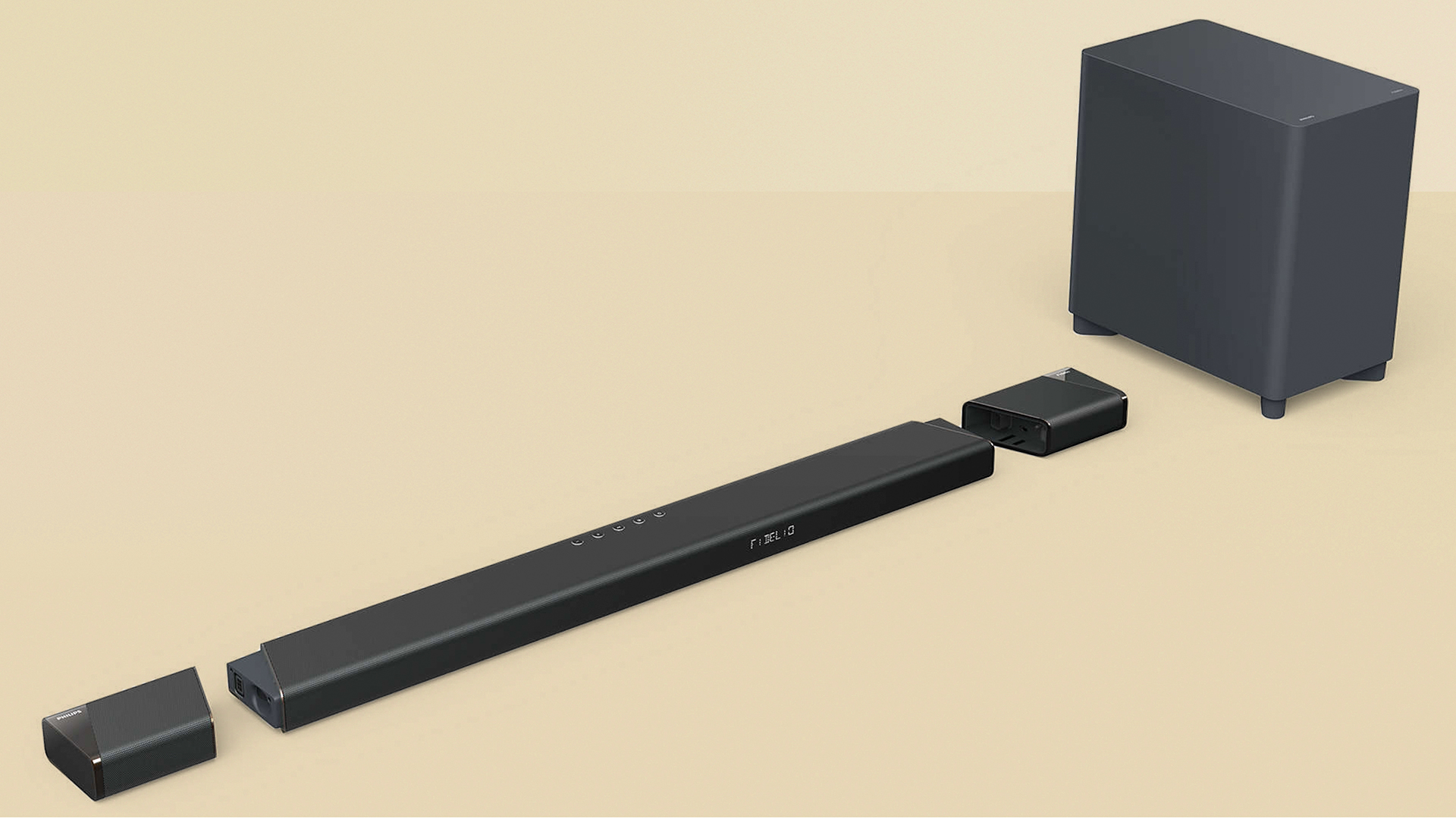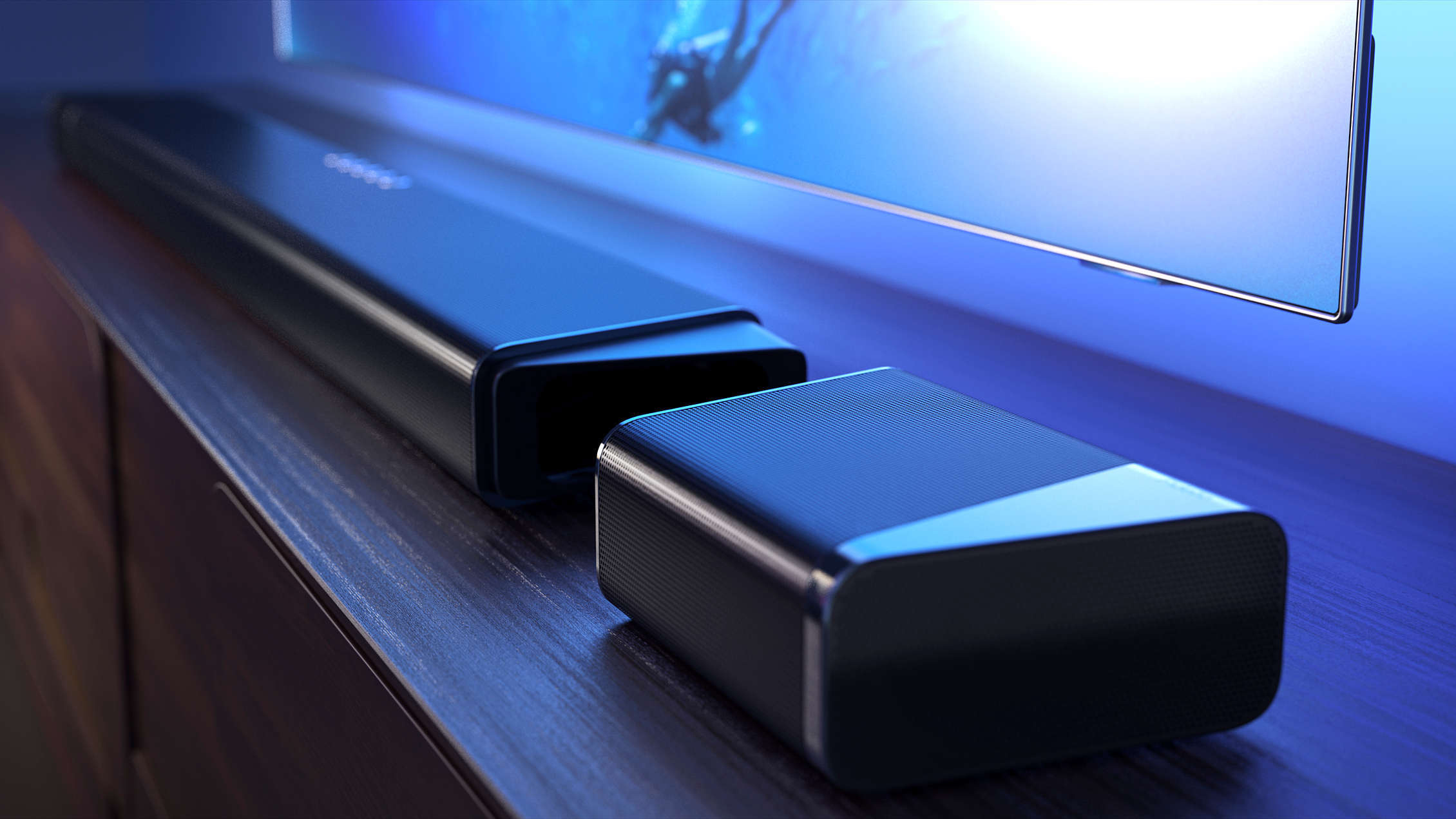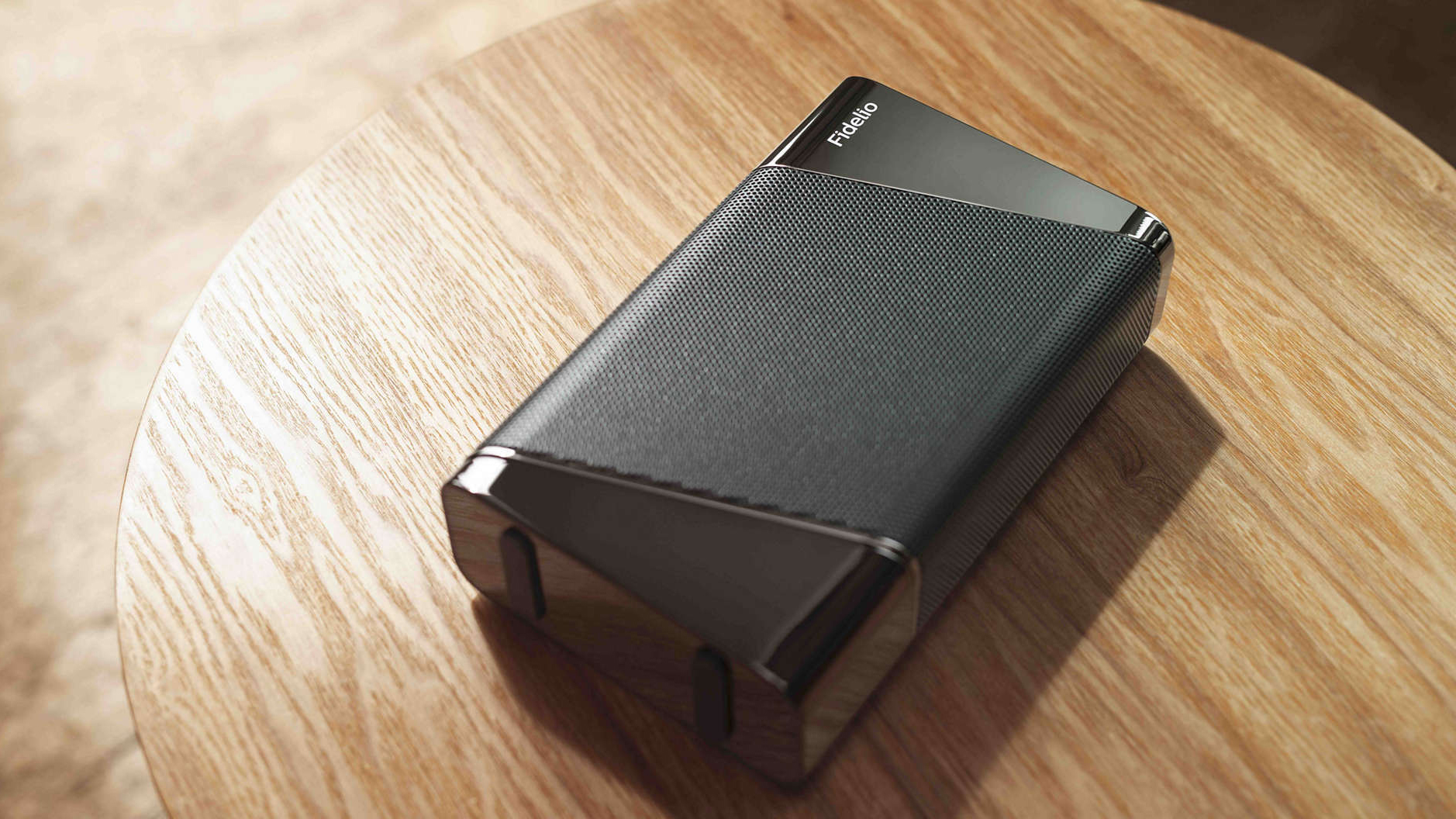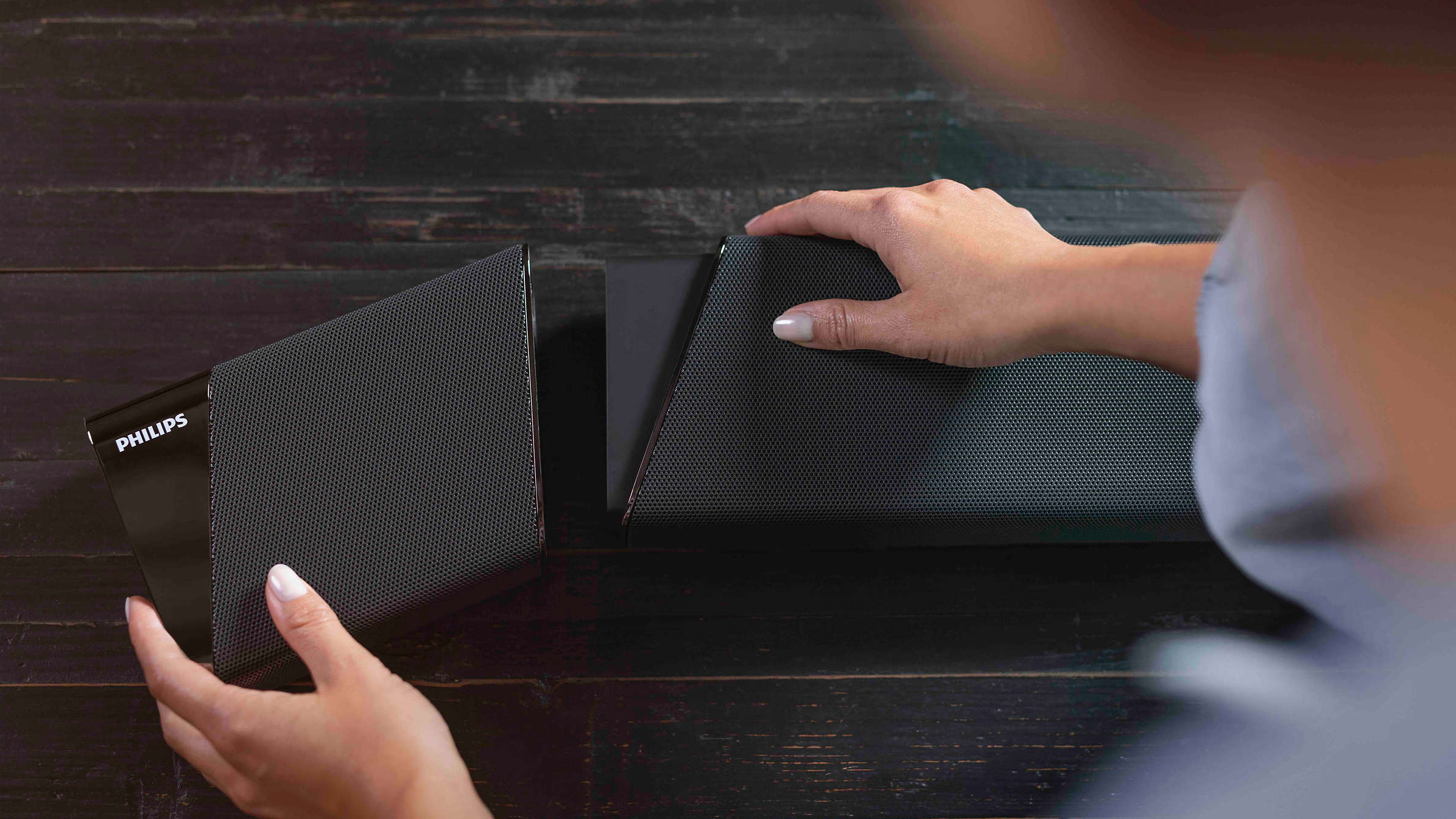Philips Fidelio B97 review: a smart, adaptable Dolby Atmos soundbar
The Philips Fidelio B97 is incredibly well-featured and sounds great with Dolby Atmos, but has some quirks

The Philips Fidelio B97 offers most of the ‘gain’ from a home cinema audio system with little of the ‘pain’.
-
+
Well-specced all-in-one audio solution
-
+
Adaptable, multi-function design
-
+
Some areas of real sonic expertise
-
-
Height effect is subtle at best
-
-
Some awkwardness in setup and operation
-
-
Not as impressive with music as with movies
Why you can trust T3

In this Philips Fidelio B97 review, I'm examining Philips’ flagship, top-of-the-shop Dolby Atmos soundbar. It intends to be a demonstration of the state of the soundbar art – in fact, ‘soundbar’ is a mild understatement, once you understand everything that’s involved here.
Specification can confidently be described as ‘extensive’. As well as DTS:X and Dolby Atmos compatibility, the B97 is certified IMAX Enhanced. It features a true set of 7.1.2 discrete channels, with a total power output of anywhere between 450 and almost 900 watts (depending on how you measure it – we’d err on the side of the smaller, yet still ample, number). These kinds of specs absolutely put it among the world's best soundbars for elite features, and it's definitely aimed to be paired with many of the very best TVs.
It comes with a wireless subwoofer and a whole host of connectivity options. And these are just the headlines. Suddenly the price doesn’t look unreasonable in the slightest.
Philips Fidelio B97 review: Price & release date
Oh yes, the price. The Philips Fidelio B97 is on sale from the end of June 2021, and you’ll get a quid in change from £1,000. At a glance it looks expensive – but as I’ve already alluded to, and will explain thoroughly in the next section – that money buys an awful lot of hardware and extensive specification.
As far as American or Australian pricing goes, that is yet to be decided – but if my experience of Philips products tells me anything, it’s that $1,499 and AU$1,899 are decent estimates.

Philips Fidelio B97 review: Features & what's new
Philips has gone to considerable lengths to ensure the B97 covers all eventuality, both where movies and music are concerned. Consequently, there’s quite a lot to cover – so here goes…
Given that any soundbar at this sort of money is likely to be the main audio product in the room where it’s positioned, and given that most people who are giving consideration to a soundbar as expensive as this expect to use it both when their TV is switched on and when it’s switched off, the B97 is specified to be an all-in audio system rather than simply a soundbar.
So connectivity is extensive. As well as three HDMI sockets (two inputs and an eARC-enabled output to the TV) with 4K passthrough, there is a digital optical input, a 3.5mm analogue input and a USB socket for servicing. Wireless connectivity runs to Bluetooth 4.2, Apple AirPlay 2, Chromecast, Spotify Connect and DTS Play-Fi for multi-room systems. Which really ought to be plenty, no matter whether you’re interested in enjoying movie sound or listening to music.
Physically, the B97 is intriguing. A little like the JBL 9.1 soundbar we reviewed a while back, the Philips features a detachable portion at either end of the soundbar. When they’re attached, these portions of course contribute to the audio presentation – but they can be detached, placed in their study and well-finished little cradles, and used as wireless rear speakers in order to deliver true surround sound.

They’re battery-powered, charging when they’re attached to the main section of the B97, and can run for around 10 hours between charges when working independently of the main soundbar. More than long enough for you to get your surround-sound jollies, we’d have thought.
Under the smoothly finished and quite expensive-feeling surface of the Fidelio B97 there are quite a number of speaker drivers. To produce the 7.1.2-channel effect, the main section of the soundbar is configured to produce left, right and centre channel information – each channel features a pair of forward-firing, full-range 3.5in ‘racetrack’ drivers, and there are also 19mm soft-dome tweeters positioned at either end.
This arrangement is designed to both maximise the apparent width of the sound as well as provide worthwhile stereo separation when listening to music. On the top of the bar there are two 2.5in full-range drivers angled upwards at 70 degrees – they’re charged with delivering the all-important height effect.
When the detachable end speakers are attached to the main bar, their orientation means each one features one forward-facing racetrack driver of the same type fitted to the main bar, and a version of the 19mm tweeter at its end. The tweeter gives additional width to the sound, and is fitted in a horn-shaped wave-guide to assist in that endeavour.
When they’re detached and positioned as rear speakers, though, a couple of things happen. Firstly, the tweeter is no longer active, because Philips wants to keep the surround effect as ‘spatial’ as possible rather than having an easily identifiable point-source of sound. Secondly, removing the speaker reveals another 19mm tweeter at each end of the soundbar – they also sit in waveguides, and are also intended to add a further element of width to the sound of the ‘bar.
Low-end presence, of course, is served up by the wireless subwoofer. It’s fitted with an 8-inch downward-firing driver and a rear-facing reflex port. And because the soundbar itself reaches down to a fairly deep 150Hz, the subwoofer is only charged with filling in below there, to its 35Hz bottoming-out point.

Philips Fidelio B97 review: Performance
Having unboxed it and positioned it in the ideal spot, you’ll probably be quite keen to hear the Fidelio B97 in action. Hold your horses, though – the Philips first needs to sap your enthusiasm with the convoluted and anti-intuitive nature of its set-up procedure.
Still, perseverance brings its own rewards, and eventually the B97 will be ready to do its thing. And ‘its thing’ turns out to be more than good enough to make you forget what a wrestling match it was that got you here in the first place.
With the detachable speaker modules attached and an appropriately accomplished Dolby Atmos soundtrack on board via HDMI, there’s plenty to admire about the sound of this Philips. The midrange reproduction, particularly dialogue in the centre channel (which is where the majority of any movie soundtrack information exists) is balanced and alive with detail – even minor palate noises don’t escape the B97’s attention. The centre channel projects well, too, so even those directors who like to bury voices deep in an overall mix (and we all know who they are) can’t stop us keeping right on top of the plot.
The top of the frequency range is crisply realised, with plenty of attack but a gratifying lack of hardness or sibilance. And because the complement of ‘racetrack’ drivers are effective down to 150Hz, it leaves the subwoofer free to get on with handling the really low stuff – which it does with some skill. It proves more subtle and detailed a bass-box than many, while still being well capable of hitting implacably hard.
Detach the modules and position them as rear speakers, and there’s no denying the B97 is an even more immersive and convincing listen. The out-and-out width of the left/right/centre channels diminishes just a touch, but it’s more than made up for by the coherent, well-integrated nature of the rear surround channels. Actual home cinema surround-sound seldom combines convenience and performance as easily as this.
The upward-firing drivers on the main soundbar contribute too, but anyone expecting the sort of overhead presence they’ve experienced in an actual cinema might find themselves underwhelmed. The height effect is discernible, but even when set to ‘max’ (which is achieved in one of the compatible apps; ‘PS Fine Tune’, most likely) the effect is subtle (if you like it) or underwhelming (if you don’t). Tonally, though, they enjoy the same combination of heft and detail as the rest of the system.
It’s a spacious overall presentation, and thanks (in part) to the accomplished nature of the subwoofer, there’s more than enough broad-strokes dynamism to give full expression to both the whispers and the explosions of even the most action-packed action movie.
Switch to some music – one of the numerous relevant apps enables you to integrate your Amazon Music, Deezer, Qobuz, Spotify or Tidal account (to name but a few), or you can stream over Bluetooth and AirPlay 2 – and the story is pretty similar. There’s a very pleasant amount of detail revealed, even from a bog-standard Spotify stream, and the B97 manages integration of its multiple drivers well.
When reproducing stereo recording through its left and right channels, the B97 is a focused, defined and reasonably well-separated listen; opt to fill all 10 channels with two channels-worth of information, though, and while scale and immersion increase no end, the overall presentation becomes rather vague and gauzy.

Philips Fidelio B97 review: Design & usability
Considering all of the componentry that’s crammed in, the B97 is a fairly discreet and unarguably well-finished device. The main soundbar (with detachable speakers attached) is 5.6x131x12cm, which is around the same width as a 55-inch TV, which probably tells you a lot about where Philips is aiming this model overall. The 5.6cm height is usefully low-enough profile to avoid getting in the way of the screen.
The subwoofer, at 40x23x41cm, is a slightly more assertive cabinet, but then it’s quite easy to stash it out of sight without affecting performance. Philips has provided enough fittings to make the bar quite easily wall-mountable too (to those with a cordless screwdriver, at least).
Control is available via the bundled remote control (which, sad to say, is the only part of the B97 experience that doesn’t seem to have tactility or quality of materials prioritised). Or you can use the brief suite of physical controls on the top of the main soundbar, or use Amazon or Google voice-control via a smart speaker on a common network. And the B97 is also compatible with the Philips ‘Sound’ app, as well as the DTS Play-Fi app when setting up a multi-room system, for example.
Set-up of the B97 isn’t what you’ll call ‘intuitive’ though. Once it’s on your network (for which you’ll need your smartphone), a lot – but, crucially, not all – of the functionality is duplicated between the Philips Sound app and the DTS Play-Fi app. The apps even look quite similar. Neither is all that rapid, though.
If you want to make EQ adjustments via your smartphone, you need the ‘PS Fine Tune’ app. And should you select ‘Spotify’ as a source from either the DTS or the Philips app, you’ll be invited to open the native ‘Spotify’ app. One soundbar, four apps open – hardly the last word in ergonomics or intuitive operation.
Build quality is reassuring, though, and Philips has specified some very agreeable materials to give the B97 a little visual and tactile pizzazz. The smoked-aluminium end-caps and surround-speaker cradles are a particularly up-market touch.

Philips Fidelio B97 review: Verdict
Like the little girl in the nursery rhyme, when the Philips Fidelio B97 is good it’s very very good, but when it’s bad it’s horrid. Luckily the good bits outweigh the bad by quite a distance.
If you want an authentic home cinema surround-sound experience (with a spot of Dolby Atmos immersion thrown in) from a well-made, well-specified and great-sounding just-about-all-in-one system, the B97 is a fine-looking and fine-sounding option. Don’t expect to set it up or, indeed, operate it without opening all the tabs on your smartphone, though.
Philips Fidelio B97 review: Also consider
If what you want from a soundbar is actual full-on surround-sound, you should cast a glance at JBL’s Bar 9.1 – it’s not as sonically adept as the Philips B97, but it’s got sheer scale of sound on its side. Plus we’ve spied some reasonably significant discounts to the asking price since our full JBL Bar 9.1 review, too.
After some price cuts, Samsung's flagship HW-Q950T soundbar is dangerously close in cost too. It's a little more expensive, but it gives you 9.1.4 channels, which makes for much stronger overhead Atmos audio, and is generally a big powerful beast of a sound system. Our full Samsung HW-Q950T review dives into where that soundbar excels and where it has issues.
Sign up to the T3 newsletter for smarter living straight to your inbox
Get all the latest news, reviews, deals and buying guides on gorgeous tech, home and active products from the T3 experts
Simon Lucas is a freelance technology journalist and consultant, with particular emphasis on the audio/video aspects of home entertainment. Before embracing the carefree life of the freelancer, he was editor of What Hi-Fi? magazine and website – since then, he's written for titles such as Wired, Metro, the Guardian and Stuff, among many others. Should he find himself with a spare moment, Simon likes nothing more than publishing and then quickly deleting tweets about the state of the nation (in general), the state of Aston Villa (in particular) and the state of his partner's cat.
-
 Coleman takes on YETI with lighter, tougher and cheaper Pro Cooler range
Coleman takes on YETI with lighter, tougher and cheaper Pro Cooler rangeMove over, YETI – there’s a new cooler in town, and it's not here to play nice
By Matt Kollat Published
-
 In the future, you might never have to take off your Galaxy Ring to charge it
In the future, you might never have to take off your Galaxy Ring to charge itA newly uncovered patent reveals Samsung is working on a wearable charger for its Galaxy Ring, and it makes a lot of sense
By Matt Kollat Published
-
 Google just added a new Gemini video creation tool I never knew I needed
Google just added a new Gemini video creation tool I never knew I neededGemini Advanced just added Veo 2 video generation
By Mike Lowe Published